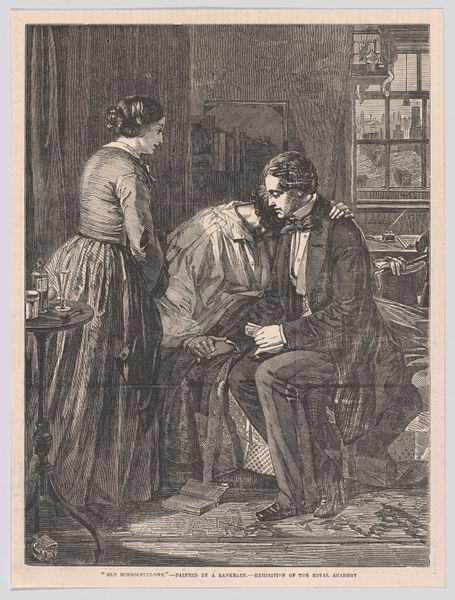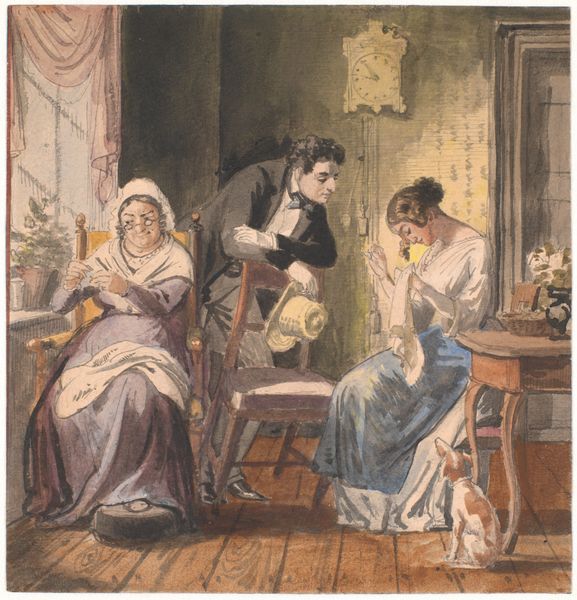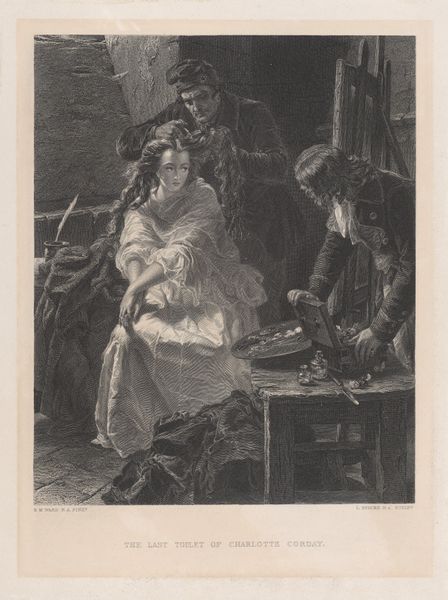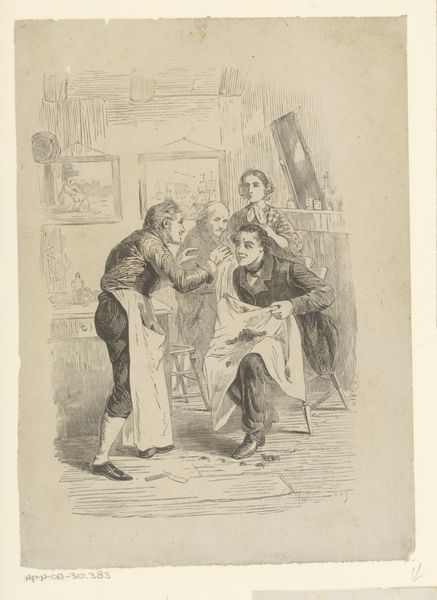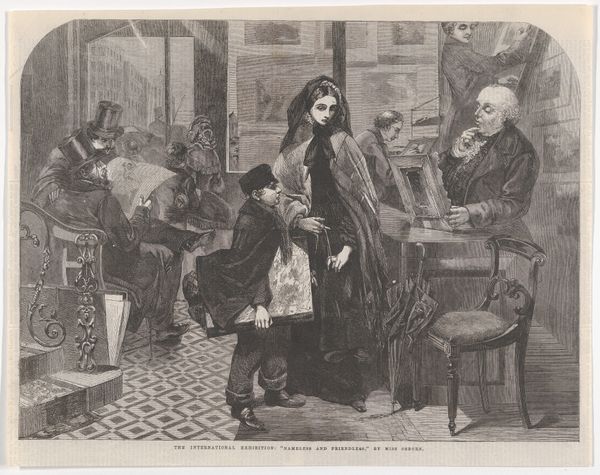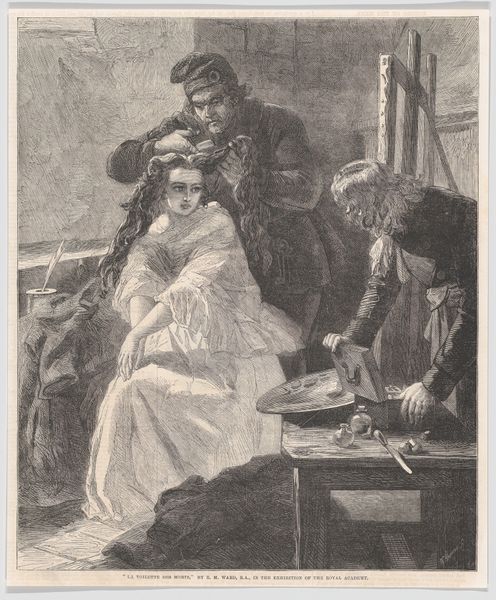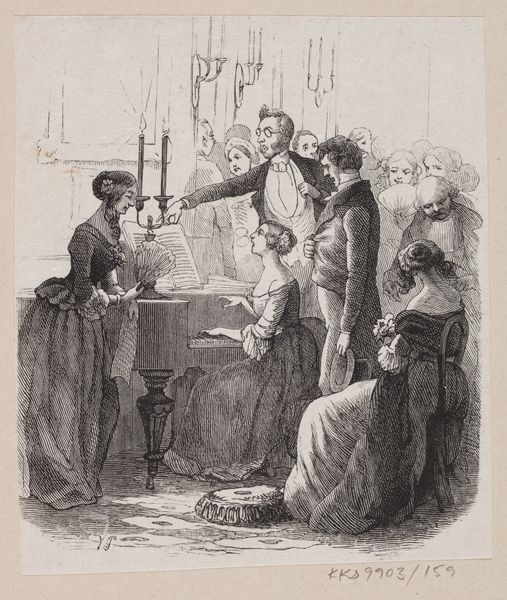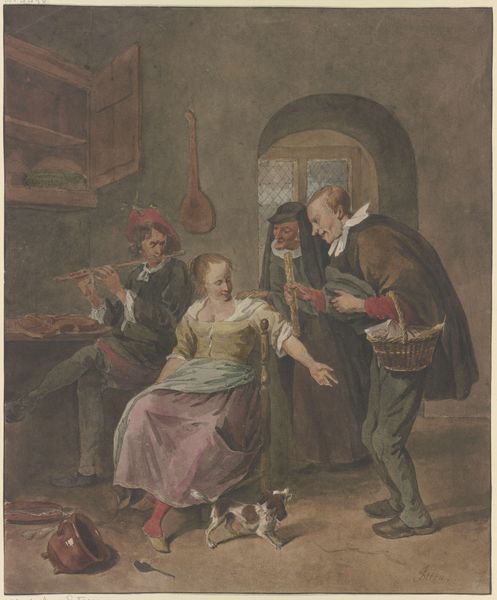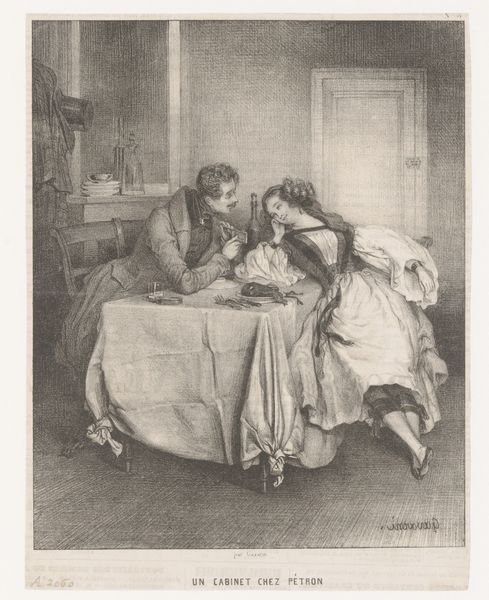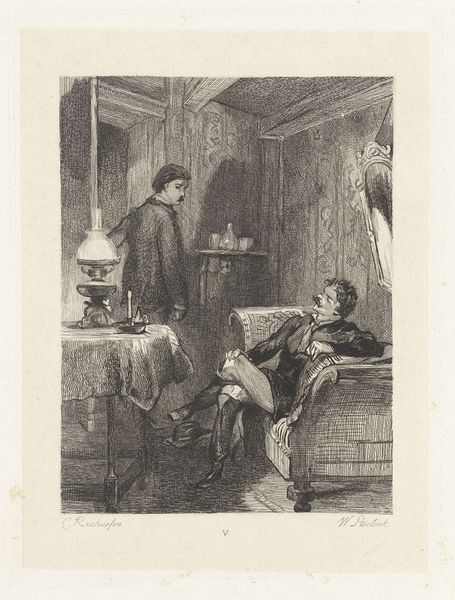
Dimensions: height 193 mm, width 149 mm
Copyright: Rijks Museum: Open Domain
Diederik Franciscus Jamin created "Kind bij de kapper" as a watercolor painting. Painted during the mid-19th century, this domestic scene offers a glimpse into the era's societal norms. The child, draped in white, embodies Victorian ideals of purity and innocence, while the presence of the mother and another child underscores the family's central role in shaping individual identities. The barber, a tradesman, represents the burgeoning middle class and the changing dynamics of labor and service. The act of cutting hair, seemingly mundane, becomes a ritual marking stages of life and conformity to social expectations. Note the watchful eyes of the women on the left, reflecting the period’s emphasis on decorum. Jamin’s work invites us to consider how seemingly innocuous scenes are laden with cultural values, shaping our understanding of childhood, family, and class. The piece resonates with the intimacy of personal care, while subtly reminding us of the broader structures that define our identities.
Comments
No comments
Be the first to comment and join the conversation on the ultimate creative platform.
